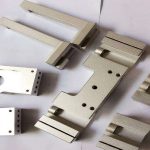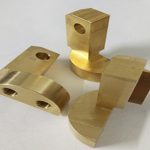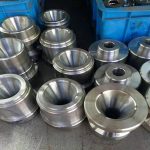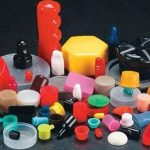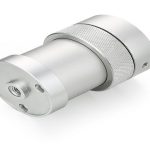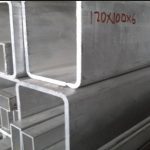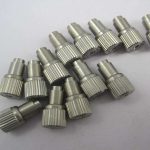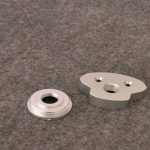At present, CNC lathe technology machining is the best choice for manufacturing production and machining. It can effectively ensure the economic benefits of the enterprise and improve the efficiency and pass rate of product production. However, CNC lathe machining links are complex, and there are many factors that are affected. Errors are easily generated in actual machining, and the machining accuracy of products is not easy to control, which affects the efficiency and qualification rate of product production, and ultimately affects the economic benefits of enterprises. Based on this, this article discusses the CNC lathe technology, the factors affecting the machining accuracy of the CNC lathe, and the method of optimizing the machining accuracy of the CNC lathe, aiming to improve the machining accuracy of the CNC lathe technology and contribute to the development of the manufacturing industry.
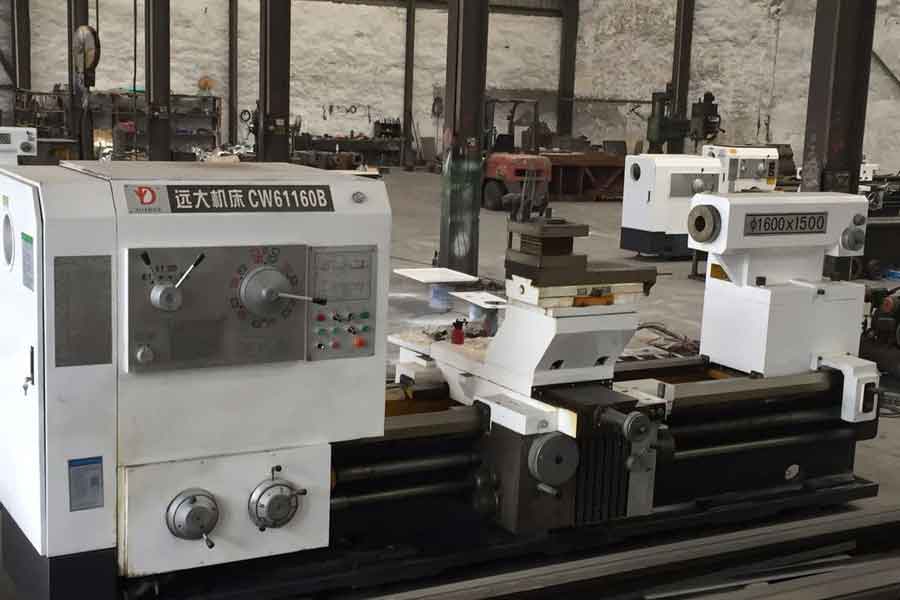
The focus of the manufacturing industry lies in “manufacturing” and “manufacturing”, and the mature development of CNC technology means the development and growth of the manufacturing industry. At present, an important indicator to measure the development of the national manufacturing level is the upgraded use of CNC technology and the use of CNC equipment. manufacturing. Therefore, the improvement of the machining accuracy of CNC lathe technology is very important to the development of the manufacturing industry.
1. Comprehensive Discussion Of CNC Lathes
1.1 Definition Of CNC Lathe
Numerical control lathe is a collection of electronic equipment and lathe. Numerical control refers to the control of lathe equipment by inputting instructions such as numbers to electronic equipment such as computers. CNC lathes are currently the most widely used machining equipment in China’s manufacturing industry, accounting for about 1/4 of the total number of machine tools in China, and the proportion is increasing year by year. CNC machine tools generally refer to all metal cutting equipment, and lathes are equipment for the metal cutting process. It can be seen that CNC lathes are the basic type of CNC machine tools and an inseparable part of CNC machine tools. Its importance has always been influenced by the world. Attention within the scope. In the actual construction environment, lathes are widely used for precision machining of parts with small precision, such as bearing parts, drill holes, disks, sleeves and other parts with a rotating surface.
1.2 Machining Principle Of CNC Lathe
A lathe is a machine tool for metal machining. The CNC lathe introduces an information-based operation method. There are electronic computer equipment that can input and process instructions inside the CNC device. The computer recognizes the number and character programming input by the operator. After the recognition, the computer According to the instructions issued by the operator, the main bearing operation part of the machine tool is operated by the servo system and the programmable controller. The main body of the machine tool selects the corresponding machining actions for the parts to be processed with the help of the feedback device according to the previous instructions. In order to operate, the machine responsible for cutting needs to be intelligent enough to automatically control the machining feed speed, motion track, displacement distance of the front and rear parts, etc., to ensure that the final product meets the design requirements of the drawing, and realize the digital machining of the workpiece. In the process of machining parts on a CNC lathe, confirming the specific steps of the machining process and the preparation of the machining program is the most important part of determining the quality of the parts.
1.3 Significance Of CNC Lathe Technology In The Manufacturing Industry
The development of numerical control technology is one of the important measurement standards for the development level of a country’s manufacturing industry. It can ensure streamlined operations, improve the accuracy of parts, and effectively save manufacturing costs. It is widely used in the manufacturing industry in China. With the continuous development of CNC technology in China, the application of CNC lathes has become more and more extensive. From the daily manufacturing of a nut to fine to precision instruments, CNC lathe technology has become an inseparable part of China’s modern manufacturing industry, and its development prospects are very promising. broad. The development of CNC lathe technology will bring more convenience to the production and life of our residents. Therefore, the market’s requirements for the accuracy of CNC lathe technology are also increasing. How to effectively ensure the level of mechanical manufacturing and the accuracy of the technology machining technology of lathes is the current The manufacturing industry is generally concerned about the problem, and the research on the optimization of the machining accuracy of the lathe technology has great practical significance.
2. Important Factors Affecting The Machining Accuracy Of CNC Lathes
2.1 Common Lack Of Precision In CNC Lathe Machining
The CNC lathe is divided into two parts: one is the CNC system, and the other is the lathe system. Therefore, the accuracy of the lathe CNC system can be divided into the control accuracy of the CNC system and the mechanical accuracy of the lathe itself. CNC lathe system is an important production tool for current machining companies. Therefore, the accuracy of CNC lathes directly affects the quality of the company’s products. Quality is the foundation of the company. If the machining accuracy of the company’s CNC lathe system is insufficient, it will directly affect the economic benefits of the company. Therefore, in actual construction, enterprises must uphold the working principle of high standards and high requirements for machining accuracy, comprehensively analyze the influencing factors that affect the machining accuracy of lathes, and ensure the machining accuracy of lathes. The mechanical accuracy of the CNC lathe system must be The materials of the parts, the error and suppression of the servo system, and the manufacturing of machine tool fixtures were investigated to analyze the reasons for the substandard accuracy, and a series of practical and effective measures were taken to reduce the machining error, to ensure the machining accuracy of the CNC lathe, and the precision machining of the lathe The production process ensures the production capacity and production quality of the enterprise, and completes the unification of the economic and social benefits of the enterprise.
2.2 Servo System Error
The servo system is a common and important system in the actual operation of CNC lathes. It is an inseparable part of the CNC lathe. Its importance to the CNC lathe is self-evident. Therefore, the operator must ensure the smooth operation of the servo system in the actual operation. The operating principle of the servo system is to drive the parts of the machine tool to transform them into parts, and process the products under such conditions. In the operation of the servo system, the motor-driven screw is the most important part of its smooth operation. It can be said that the transmission accuracy of the screw directly determines the control accuracy of the servo system. In the actual machining process, the servo system generally exists in the form of a closed loop in CNC lathe machining. The working principle between the closed loop servo system and the lead screw is that the operator inputs a digital command, and the servo system transmits the command to the lead screw. Run the command in the reverse direction. During the reverse rotation of the screw, due to the mechanical characteristics of the screw, there will be a short-term idling phenomenon. If it cannot be controlled reasonably, a reverse clearance error will occur, which will affect the CNC lathe. The machining accuracy.
3. Process Optimization Measures For The Machining Accuracy Of CNC Lathes
3.1 Select The Tool Material And Tool Angle That Meet The Machining Requirements
The choice of cutting tools is an important factor that affects the machining accuracy of CNC lathes. The cutting product’s tool material rigidity is not enough, or the angle of the tool does not meet the machining requirements, which will directly affect the machining accuracy. In actual machining, CNC lathes often need to be equipped with a complete set of standard series of tools. There are many types of tools. Different tools have different machining requirements, and the machining performance of different tools is different. Tool selection focuses on two aspects: one is The material of the tool, the second is the angle of the tool. The material of the props needs to be selected according to the machining requirements. For example, the material of the spiral turning tool is generally high-speed steel, because the toughness and strength of the high-speed steel material is better, and the machining process does not have severe vibration and strong impact, but it needs to be cut quickly. Cemented carbide with higher heat resistance, wear resistance and hardness is a suitable choice. When selecting the turning tools equipped on the lathe, the assembler of the lathe must follow the principle of practicability, select suitable materials, and be familiar with the products to be processed, and choose the turning tool with the right geometric angle according to the machining requirements of the part.
3.2 Choose Clamping Method Suitable For The Workpiece
In actual work, when the CNC lathe is in use, the clamping method is the same. No matter it is clamping the workpiece or the ordinary workpiece, it is not a fixed single clamping method. The combined clamping method is the CNC lathe machining workpiece clamping. The common way. The principle of this kind of workpiece clamping is to combine various clamping methods, scientifically determine the positioning reference, and effectively prevent workpiece clamping errors and repeated clamping. In addition, when installing clamping components on a CNC lathe, you must choose a reasonable combination of clamping methods according to the requirements of the parts to be processed to improve the clamping efficiency and clamping effect of the workpiece, ensure the quality and speed of the processed parts, and effectively improve the performance of the CNC lathe. Machining precision, improve the quality of parts, ensure the economic benefits of enterprises, and promote the development of the CNC manufacturing industry.
3.3 Choose The Cutting Amount And Cutting Fluid That Meet The Machining Requirements
The CNC lathe is an instrument responsible for the product cutting process. Therefore, the control of the product cutting process will directly affect the accuracy of the CNC lathe. During the product cutting process, the amount of back tooling, cutting knife cutting speed, feed distance, etc. are all cutting parameters. A link that cannot be ignored. Therefore, in order to effectively improve the machining accuracy of CNC lathes, it should be flexible and choose the corresponding machining method according to the characteristics of the processed parts. For example, if the rough machining lathe, then the focus is on the machining efficiency of the parts, you can choose the relatively large amount of back tool, spindle cutting speed and feed speed, which can effectively increase the machining speed and ensure the original prototype of the part. Convenient for subsequent finishing. In finishing machining corresponding to rough machining, accuracy and precision are more important. At this time, the selection of the amount of back-cutting needs to be combined with the characteristics of the machined parts and the arrangement of reserved finishing allowances. The cutting speed is preferred to the higher , Reduce machining error. It is worth mentioning that the cutting process is the process of grinding the tool and the metal blank. In this process, the lathe will release a large amount of frictional heat. The contact between the tool and the workpiece tends to be deformed due to high-strength friction and high temperature. It is not conducive to the improvement of machining accuracy. Therefore, CNC lathes need to adopt effective methods to reduce the temperature of the machining environment and reduce friction during machining. Emulsions with good cleaning and cooling effects can be used to ensure that the tools are not deformed. The cutting consumption of the CNC lathe and the use of cutting fluid are an important part of the accuracy of the CNC lathe. During the construction, the operator needs to pay attention to the selection and choose the most suitable method for machining to ensure the machining speed, accuracy and quality.
3.4 Use Error Prevention Method
Error prevention method is a common prevention method to improve machining accuracy and reduce errors during CNC lathe machining. Its principle is to clarify the machining accuracy of lathe-related equipment when the CNC lathe is in the state of design and production, improve its machining accuracy, and find potential The threat of error, eliminate it in time. The error prevention method can effectively control the overall machining accuracy of the CNC lathe and reduce the machining error, but the use cost is high and the flexibility is low. It is not suitable for improving the assembly of the CNC lathe that has been put into use. It is suitable for the pre-production link and the operator The error prevention method can be reasonably used in the construction to facilitate the overall control of the accuracy of the CNC lathe.
3.5 Using Error Compensation Method
The error compensation method is a widely used method of repairing errors in the machining process of CNC lathes. It uses the compensation function of the number system to correct the errors of the existing coordinate axes. Error compensation method is one of the important ways to improve the machining accuracy of CNC lathes. Its principle is to reduce the phenomenon of coordinate axis errors of CNC lathes by enhancing the compensation function of the CNC system, thereby effectively improving the accuracy of CNC lathes. The error compensation method can effectively compensate for the inability to produce a mechanical lathe with a precision suitable for the product because of its insufficient level of mechanical accuracy. Through the application of the error compensation method, the mechanical lathe can produce complex products with higher precision. The error compensation method can be realized through the combination of software and hardware, and the software machining is to realize the interpolation machining operation through the programming method, so as to meet the requirements of the part spacing and achieve the purpose of producing more high-precision parts. The hardware method is mainly used to repair the reverse deviation of the semi-closed-loop servo system. The operator uses the error compensation method to reduce the reverse deviation caused by the electric drive screw to the servo system and reduce the error in the part machining. Appropriate use of error compensation method can effectively improve the accuracy of machined parts and improve the drawbacks of lathe equipment. It is an effective method to improve the machining accuracy of CNC lathes.
4. Conclusion
In summary, CNC lathes have significant technical advantages and have become an important part of China’s manufacturing industry. China’s requirements for CNC lathe technology machining accuracy are also getting higher and higher. Enterprises must improve the machining accuracy of CNC lathes and optimize manufacturing processes. , Choose the right tool and angle, improve the error, control the cutting amount, etc., to reduce the error as much as possible, to ensure the economic benefits of the enterprise, and to promote the development of the manufacturing industry.
Link to this article: The Principles, Precision Influencing Factors And Optimization Measures Of CNC Lathes
Reprint Statement: If there are no special instructions, all articles on this site are original. Please indicate the source for reprinting:https://www.cncmachiningptj.com/,thanks!
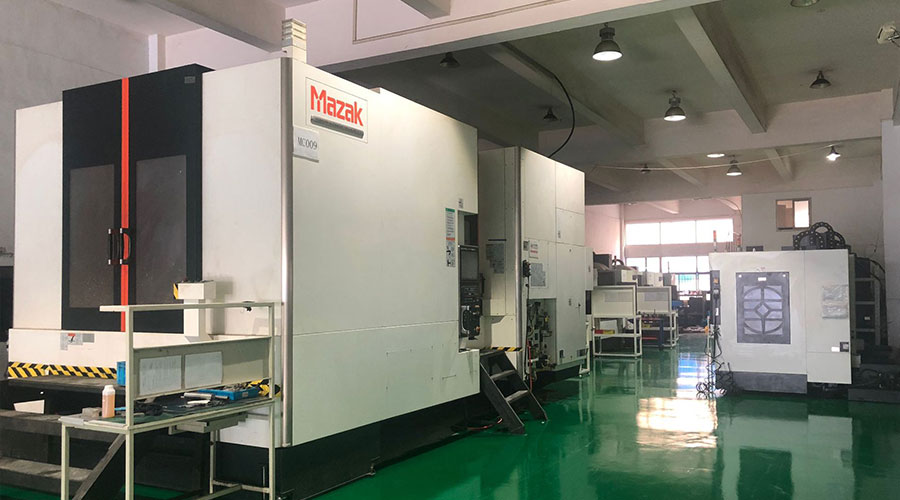 PTJ® provides a full range of Custom Precision cnc machining china services.ISO 9001:2015 &AS-9100 certified. 3, 4 and 5-axis rapid precision CNC machining services including milling, sheet metal to customer specifications,Capable of metal & plastic machined parts with +/-0.005 mm tolerance.Secondary services include CNC and conventional grinding, laser cutting,drilling,die casting,sheet metal and stamping.Providing prototypes, full production runs, technical support and full inspection.Serves the automotive, aerospace, mold&fixture,led lighting,medical,bicycle, and consumer electronics industries. On-time delivery.Tell us a little about your project’s budget and expected delivery time. We will strategize with you to provide the most cost-effective services to help you reach your target,Welcome to Contact us ( [email protected] ) directly for your new project.
PTJ® provides a full range of Custom Precision cnc machining china services.ISO 9001:2015 &AS-9100 certified. 3, 4 and 5-axis rapid precision CNC machining services including milling, sheet metal to customer specifications,Capable of metal & plastic machined parts with +/-0.005 mm tolerance.Secondary services include CNC and conventional grinding, laser cutting,drilling,die casting,sheet metal and stamping.Providing prototypes, full production runs, technical support and full inspection.Serves the automotive, aerospace, mold&fixture,led lighting,medical,bicycle, and consumer electronics industries. On-time delivery.Tell us a little about your project’s budget and expected delivery time. We will strategize with you to provide the most cost-effective services to help you reach your target,Welcome to Contact us ( [email protected] ) directly for your new project.
Link to this article:The Principles, Precision Influencing Factors And Optimization Measures Of CNC Lathes
Reprint Statement: If there are no special instructions, all articles on this site are original. Please indicate the source for reprinting:Tungusten,Thanks!^^

